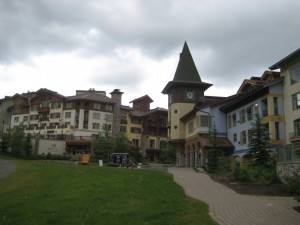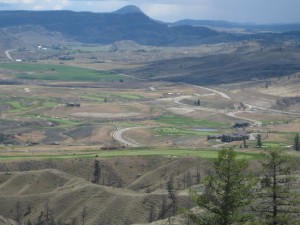Builders Hoping Single-Family Orders Pick Up in 2012
This article appeared on the Kamloops Daily News on December 23rd, 2011.

“New homes were significantly down. We think it’s a combination of things: the bad news of the global economy. A number of realtors and homebuilders have said sales stopped when the HST vote happened,” he said.
Of course, new home sales also turned sluggish when the HST was first created, but they did pick up after about six months, he said. “This time around, we don’t know.”
His group is working on a campaign for the new year to let buyers know it’s an ideal time to purchase a new house, Hayashi said. “Costs are going down. There is no advantage in waiting for the GST/PST to come off,” he said.
While new house sales are slow — with the exception of a flurry of selling in late November — there also isn’t a lot out on the Kamloops market, he said. “The other concern is when sales do pick up, there’s going to be a shortage. And whenever there’s a shortage, prices start to go up.”
Hayashi said his company, Nexbuild, has stayed busy with commercial work and home renovations. There are also energy-savings grants that homeowners should be aware of. “We’re looking forward to things picking up in new energy retrofits, some grants and incentives out there,” he said. “The renovation market continues to be strong. The energy retrofits, people staying put and upsizing or downsizing or even just maintaining. That’s a good opportunity for local builders.”
Despite the single-family home slowdown, Kamloops’ construction demand has been fairly stable going into 2012, he said. “So I’m hoping it’ll pick up. We’re not looking at a big boom or anything, the world is going to affect us, but I would say we’re doing really well. We’re really fortunate here.”
Brian Ledoux, president of the Kamloops and District Real Estate Association, agreed with Hayashi’s observations about multi-family housing doing better than new single-family homes. “New construction and residential sales were low, just based on the way the HST rules bounced around, nobody knew what to do,” he said. “Information didn’t get out well enough for the public to understand what was happening, so they decided not to do anything.”
But used houses sold well, in fact by year’s end, the total number of homes sold was close to matching last year’s, said Ledoux. The count taken a few weeks before 2011 ended was 1,980 homes sold, compared with around 2,100 or 2,200 at the end of 2010, he said.
He knew of only one house that sold that was priced over $1 million this year, but there were several in the $700,000 to $800,000 range. Interest rates attracted first-time home buyers, he said.
House prices in Kamloops have actually been declining since 2007, but are now leveling off, said Ledoux. He predicted the housing market in 2012 will see a slow and steady increase in sales.

 Sun Peaks celebrates its 50th anniversary this season. This is the second in a two-part series highlighting some of the history of the development of the ski resort.
Sun Peaks celebrates its 50th anniversary this season. This is the second in a two-part series highlighting some of the history of the development of the ski resort. It’s been nearly five months since Tobiano resort went into receivership, but there are still no takers for the financially struggling development.
It’s been nearly five months since Tobiano resort went into receivership, but there are still no takers for the financially struggling development.